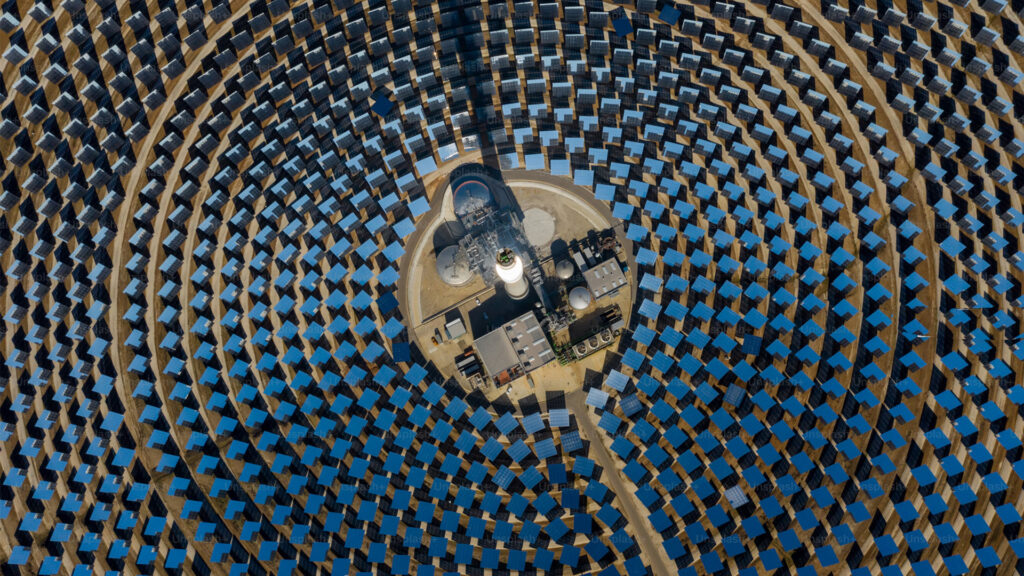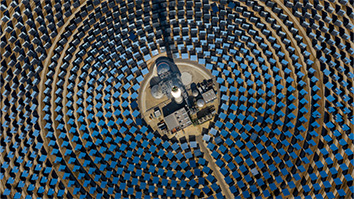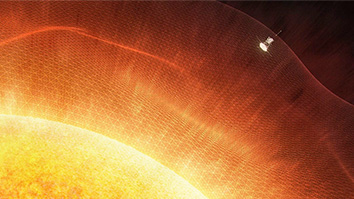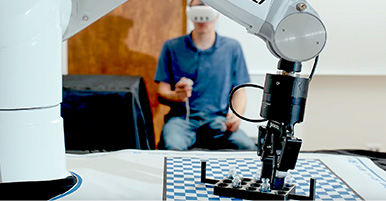
SRI’s advancements are in ceramic matrix composites, which are capable of withstanding extreme temperatures and corrosive environments.
In the arid expanses of the Arizona desert, a revolution in renewable energy is taking shape. Senior SRI Researcher Junhua Wei and his colleagues are pioneering advancements in ceramic matrix composites (CMCs), materials capable of withstanding extreme temperatures and corrosive environments.
The work promises to enhance the efficiency and sustainability of solar energy systems, specifically in concentrated solar plants that harness immense heat to store energy in molten salt.
In a project funded by the U.S. Department of Energy, SRI’s composites are designed to overcome the brittleness and fracture-prone nature of traditional ceramics by improving its design architecture and developing materials that withstand harsh elements.
“Traditional metals like steel fail under the harsh conditions of these plants, necessitating the development of more resilient materials,” says Wei. “SRI composites stand out due to a technique that integrates the ceramic matrix by chemically linking ceramic particles within the ceramic precursor. This is crucial in preventing cracking, a common failure point, ultimately extending the material’s lifespan and reliability.”
These advanced CMCs developed by SRI improve the performance, durability, and cost-effectiveness of concentrated solar plants, contributing to a more sustainable and efficient solar energy system. This in turn helps reduce the environmental impact of energy production and promotes the use of renewable energy sources.
“Our composites are designed to overcome the brittleness and fracture-prone nature of traditional ceramics.” — Junhua Wei
Traditional CMCs typically incorporate carbon fibers or silicon carbide fibers for toughness, integrated within a ceramic matrix. The novel method from SRI chemically links the ceramic particles with ceramic precursor to the strengthening fibers, which resists crack and void generation when forming the ceramic matrix. The time-consuming and costly ceramic infiltration process to heal the cracks and voids in the CMC can therefore be skipped, ultimately reducing manufacturing costs and lowering the composite market cost of today’s CMC materials.
A promising application of advanced CMCs is in high-efficient concentrated solar plants. These plants concentrate sunlight to heat molten salt, which then stores energy. The challenge lies in the molten salt’s corrosive nature and high temperature, which degrades traditional containment materials over time.
SRI’s materials offer durability, corrosion resistance, and lower costs. Its proprietary process offers a 50% reduction in materials development and manufacturing costs and improved performance. SRI’s materials maximize the composite architecture and focus on process development to create a sensor-embedded system for digital twin data feed-in.
The high-concentration CMC consists of ~20% ceramic particles (by volume) within the composite, providing properties that suit several applications including ablation-resistant thermal protection systems in hypersonic vehicles, high thermal conductive heat exchangers in industrial de-carbonization units, and first wall structural materials in fusion applications.
“By enhancing the strength and longevity of the materials used in concentrated solar plants, SRI can improve the efficiency and sustainability of renewable energy sources, representing a significant step forward in material science,” said Wei. “This innovation underscores the importance of robust materials in extreme conditions, paving the way for more reliable and cost-effective renewable energy solutions.”
To learn more about SRI’s materials program, get in touch today.



